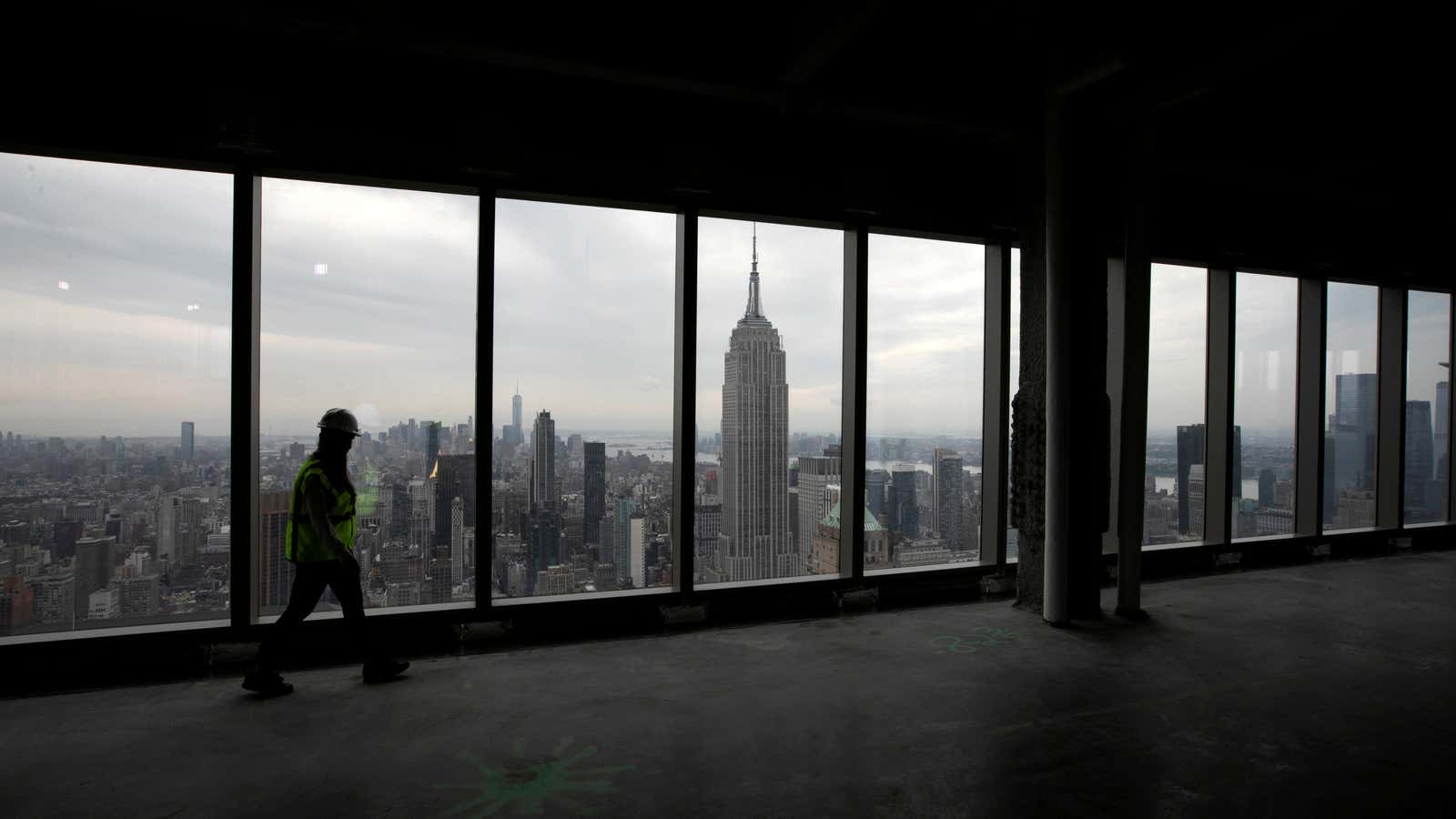In another stark sign of the pandemic’s impact on office-space demand, data from Costar Group, a commercial real estate firm, shows there is 12.2 million square feet of vacant sublet space in New York City as of late January 2021, up 91% from the 6.4 million square feet that was vacant and available in the second quarter of 2019.
That brings the total amount of available sublease space, including space that is currently still occupied, to 28.2 million square feet, an 82% increase from mid-2019.
“Everyone right now is looking at their balance sheet and saying how can I cut costs?” says Victor Rodriguez, director of market analytics at Costar. “One of the notable operating expenses on any balance sheet is the real estate cost.”
As working from home has become more accepted, he points out that any coming contraction “brewing in the office market” has only gotten stronger. Rodriguez says companies across nearly all industries are looking to cut real estate costs or relocating select departments to less expensive areas.
For example, WPP, the UK parent of major advertising firms including Ogilvy, is said to be planning to slash its global real estate costs by up to 20% in the next five years—including a reported 700,000-square-foot reduction of its footprint in New York City.
Kathryn Wylde, CEO of nonprofit group Partnership for New York City, which works with the city’s business leaders, government, labor, and civic sector, says the pressure on rent is something she expects the tech industry will take advantage of. Facebook and Amazon have signed leases in New York during the pandemic, leading the growth in the tech sector’s ongoing expansion in the city.
But Costar’s Rodriguez notes that many of the large tech leases were already in the pipeline before Covid-19 shifted many employees to long-term remote work. He’s waiting to see whether deals from still cash-rich tech companies will continue this year.
Overall, revenue for commercial and residential US real-estate rental and leasing companies rose by more than $23 billion between the second and third quarter of 2020. However, the decline in demand for office space contributed to a gap of more than $6 billion compared to the revenues in the first quarter right before the pandemic, according to data from the US Census Bureau.
To those concerned about New York’s real estate market, Wylde cites the example of lower Manhattan after 9/11, which would become one of the faster-growing neighborhoods in the US a decade later, due in part to state and federal subsidies. It was successfully re-conceived as a “live-work community,” with a mix of both commercial and residential development.
Overall, Rodriguez says there will be “a lot of waiting and seeing,” with much of the near-term outlook depending on the speed of the rollout of the Covid-19 vaccines.
